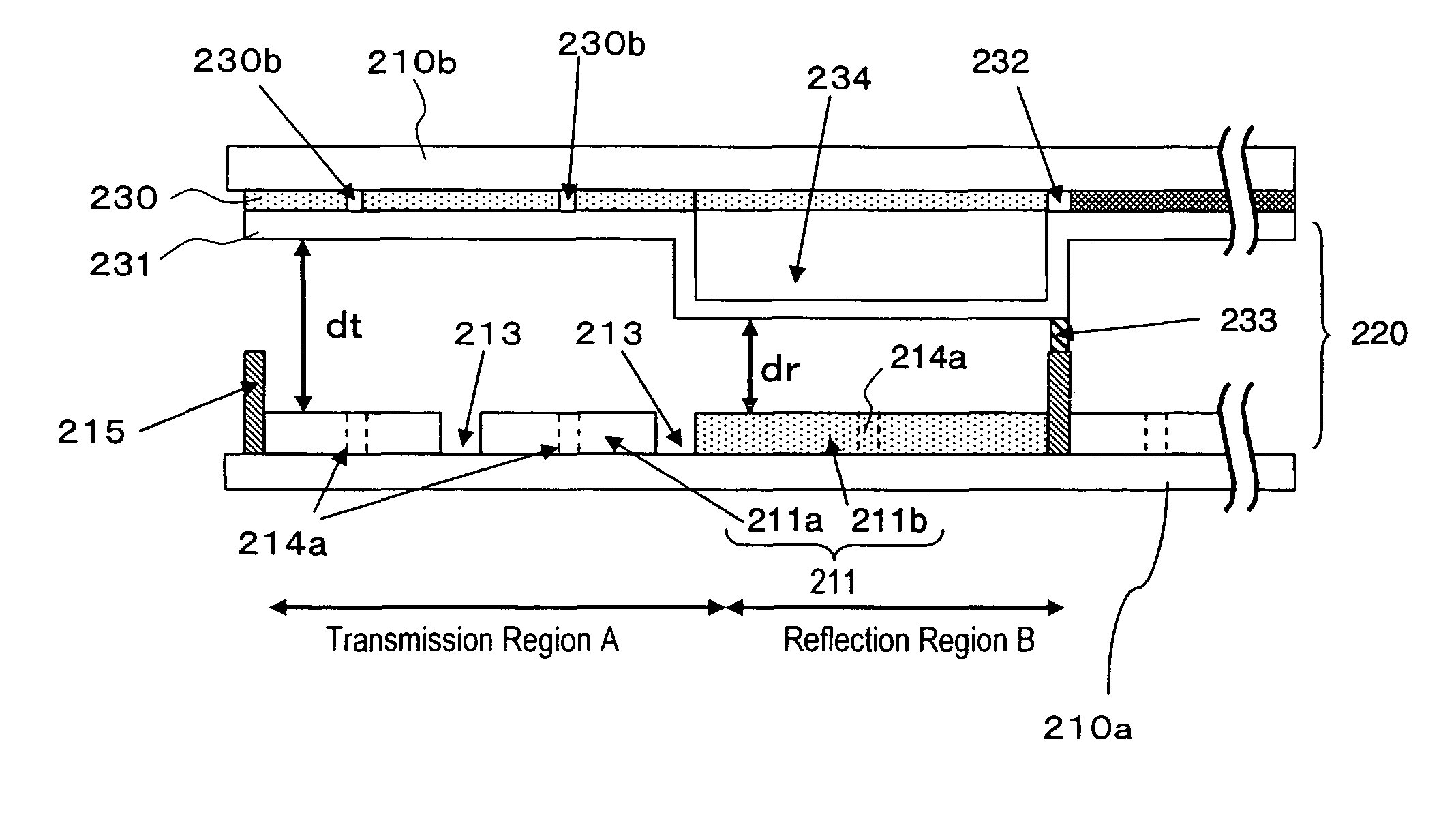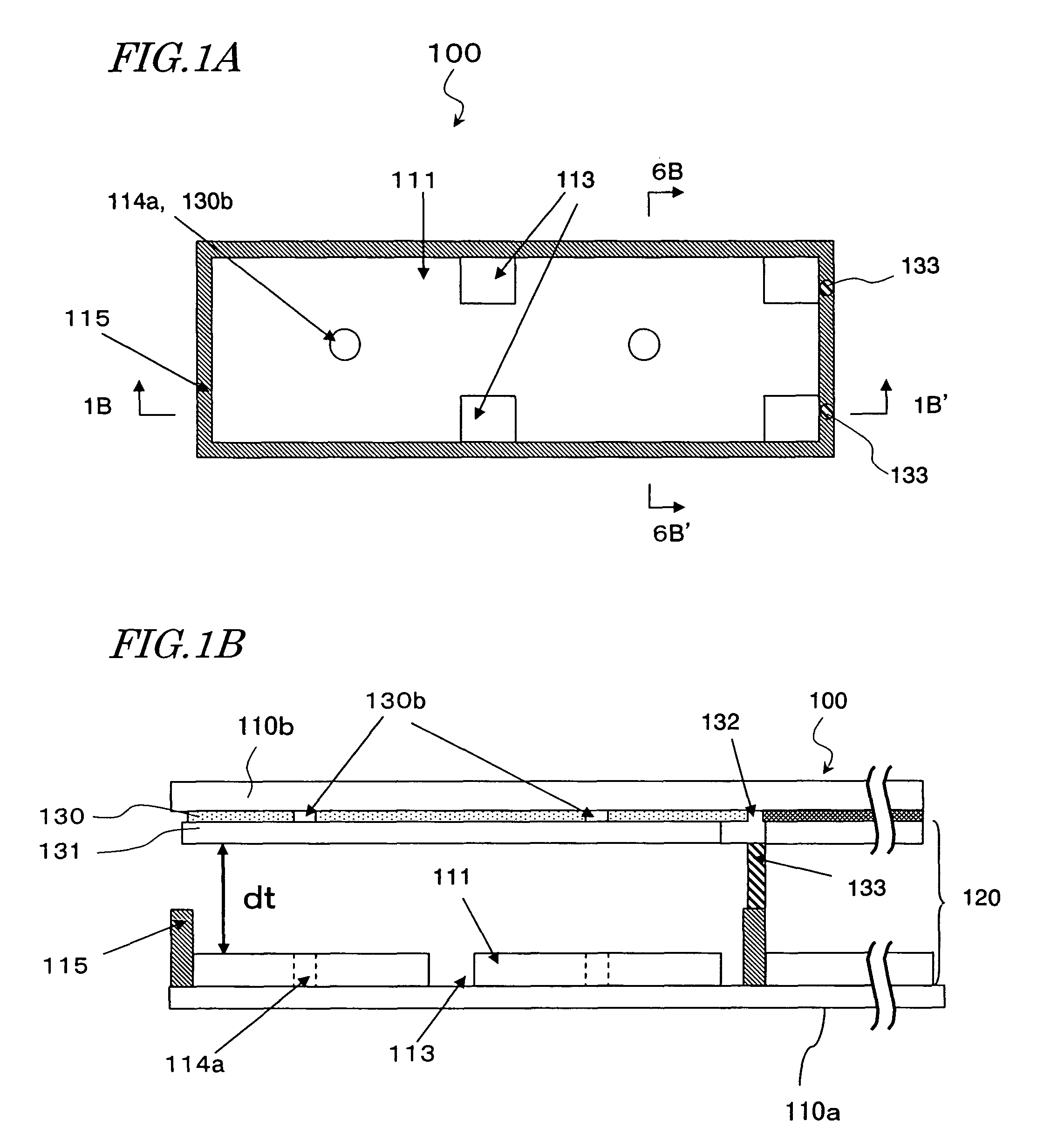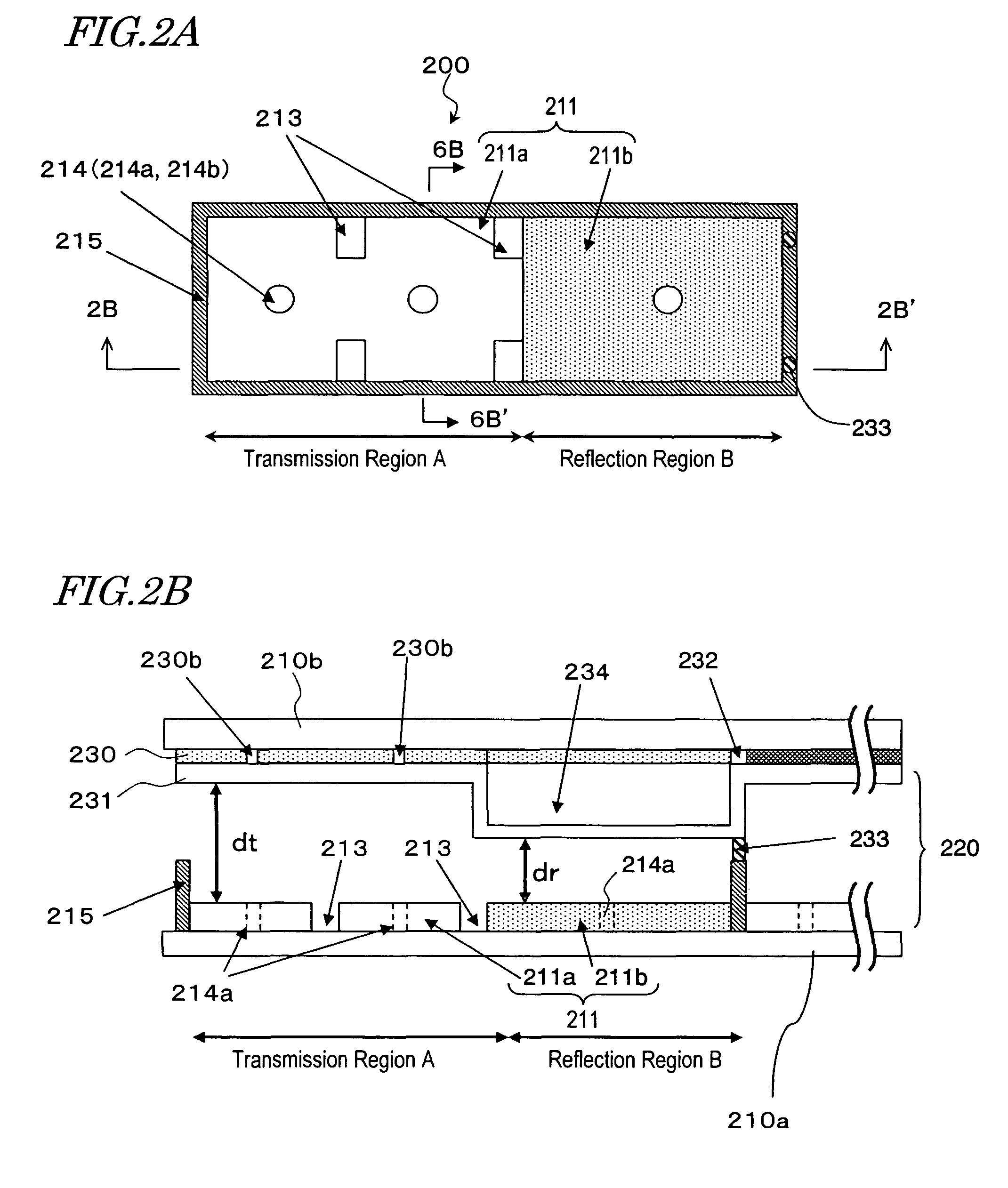Multi-domain liquid crystal with axisymmetric alignment and electrode having asymmetrical cuts at the edge
a liquid crystal and electrode technology, applied in the field of multi-domain liquid crystals with axisymmetric alignment and electrodes with asymmetric cuts at the edges, can solve the problems of difficult to generate inclined electric fields over the entire region of each pixel, occurrence of afterimage phenomena, and complicating the fabrication process, so as to reduce the effective aperture ratio, improve the uniformity of display, and improve the effect of uniformity
- Summary
- Abstract
- Description
- Claims
- Application Information
AI Technical Summary
Benefits of technology
Problems solved by technology
Method used
Image
Examples
Embodiment Construction
[0049]Hereinafter, LCD devices of an embodiment of the present invention will be described concretely with reference to the relevant drawings.
(Transmissive LCD Device)
[0050]A transmissive LCD device 100 of the embodiment of the present invention will be described with reference to FIGS. 1A and 1B. FIGS. 1A and 1B diagrammatically show one pixel of the transmissive LCD device 100, in which FIG. 1A is a plan view and FIG. 1B is a cross-sectional view taken along line 1B-1B′ in FIG. 1A.
[0051]Hereinafter, described will be the case that one pixel is divided into two parts (N=2). The number of parts into which one pixel is divided (=N) can also be three or more depending on the pixel pitch. In any case, the number of openings (=n) each to be positioned roughly in the center of a divided region on a second substrate is preferably the same as the number of divided parts (=N). The effective aperture ratio tends to decrease with increase of the number of divided parts (=N). Therefore, for an...
PUM
| Property | Measurement | Unit |
|---|---|---|
| transmittance | aaaaa | aaaaa |
| thickness | aaaaa | aaaaa |
| reflectance | aaaaa | aaaaa |
Abstract
Description
Claims
Application Information
 Login to View More
Login to View More - R&D
- Intellectual Property
- Life Sciences
- Materials
- Tech Scout
- Unparalleled Data Quality
- Higher Quality Content
- 60% Fewer Hallucinations
Browse by: Latest US Patents, China's latest patents, Technical Efficacy Thesaurus, Application Domain, Technology Topic, Popular Technical Reports.
© 2025 PatSnap. All rights reserved.Legal|Privacy policy|Modern Slavery Act Transparency Statement|Sitemap|About US| Contact US: help@patsnap.com



